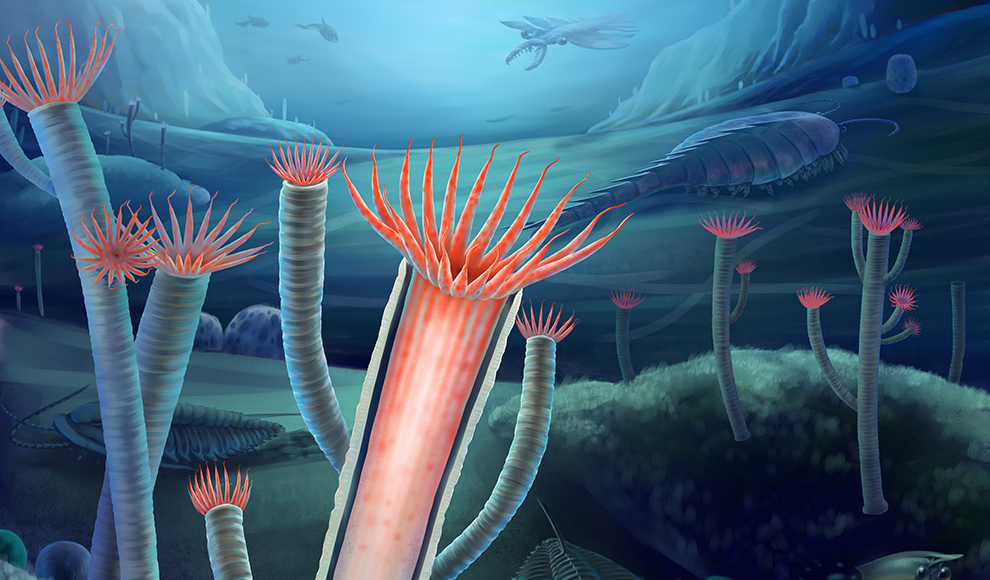The discovery of fossilized soft tissues from the 514 million-year-old marine creature Gangtoucunia aspera has solved a mystery about the evolution of the first skeletal organisms. The first creatures with hard skeletons appeared on Earth about 550 to 520 million years ago. However, most fossils from this time cannot be accurately identified today because only hollow, short tubes have been preserved. To investigate the appearance of the animals living at that time and their evolutionary relationship to today’s living species, scientists rely on fossilized soft tissues. Researchers led by Guangxu Zhang from Yunnan University in Kunming, China, have discovered soft tissues of the tube animal Gangtoucunia aspera, according to a statement from the University of Oxford. The fossils of the tube animal are about 514 million years old and exceptionally well-preserved, with the intestines and mouthparts present due to the oxygen-poor conditions of the site.
Previously discovered tube-shaped fossils of Gangtoucunia were interpreted as the dwelling tube of a marine worm. However, the newly discovered soft tissues contradict this assumption, according to Zhang. The new findings suggest that Gangtoucunia aspera was not a worm but a cnidarian, a simple ancestor of today’s jellyfish. The researchers identified Gangtoucunia aspera as a polyp with a skeletal structure that anchored the animal to the seafloor. The tentacles could protrude from the tube and catch small prey, and the researchers believe that the cnidarian could retract its tentacles completely when in danger. The tube of Gangtoucunia aspera was entirely made of calcium phosphate, the material that also makes up human teeth and bones.
The classification of Gangtoucunia aspera as a cnidarian and not a worm solves a mystery about the evolution of fossilized tubes, according to Luke Perry. “These mysterious tubes are often found in groups of hundreds of individuals, but until now, we had no way to classify them. Thanks to these extraordinary new specimens, an important piece of the evolutionary puzzle has been put in place.” The discovery of the fossilized soft tissues of Gangtoucunia aspera provides valuable insights into the evolution of skeletal organisms and their relationship to today’s living species.










